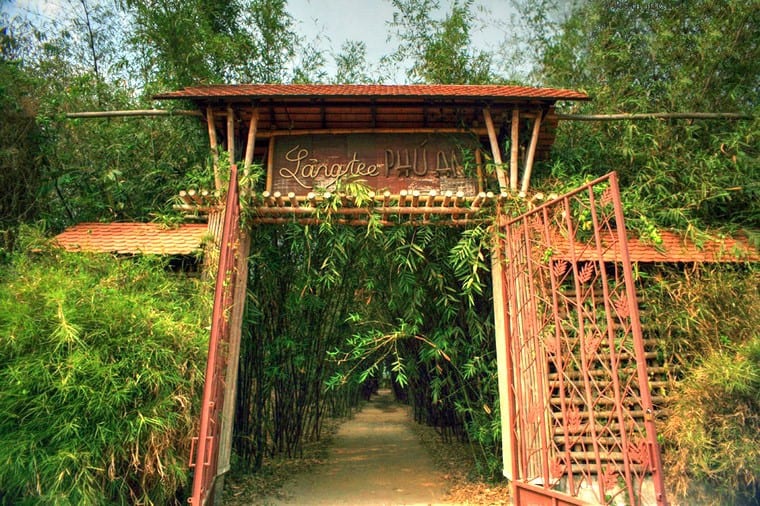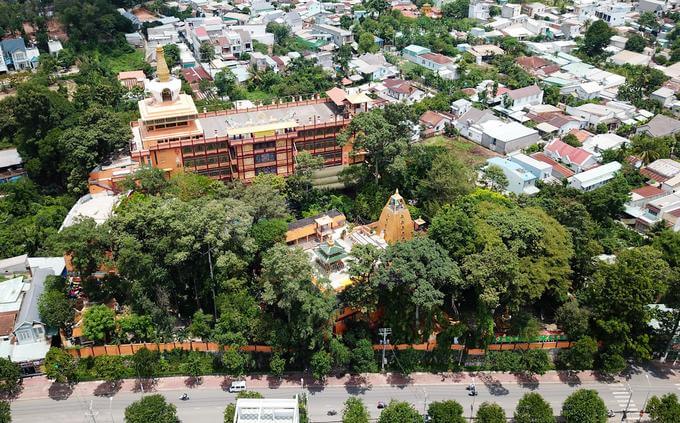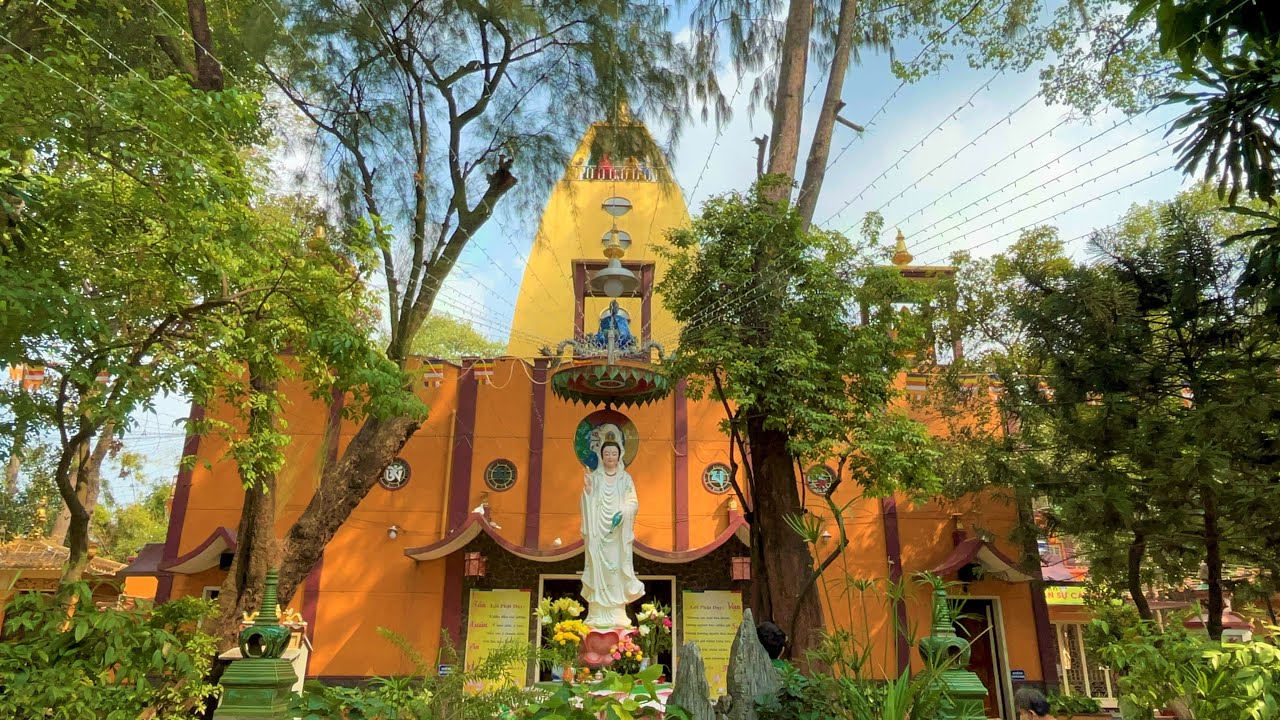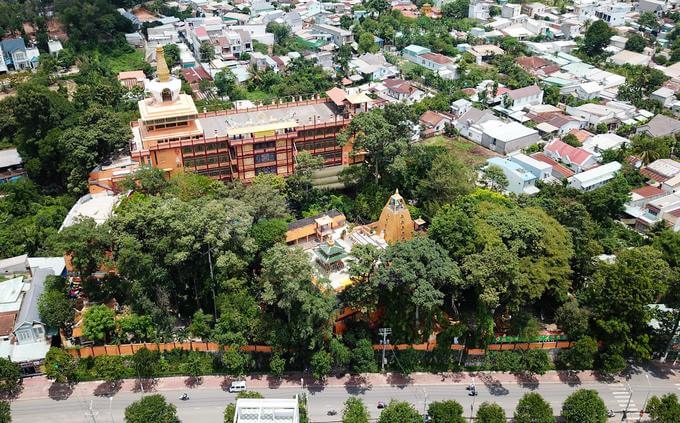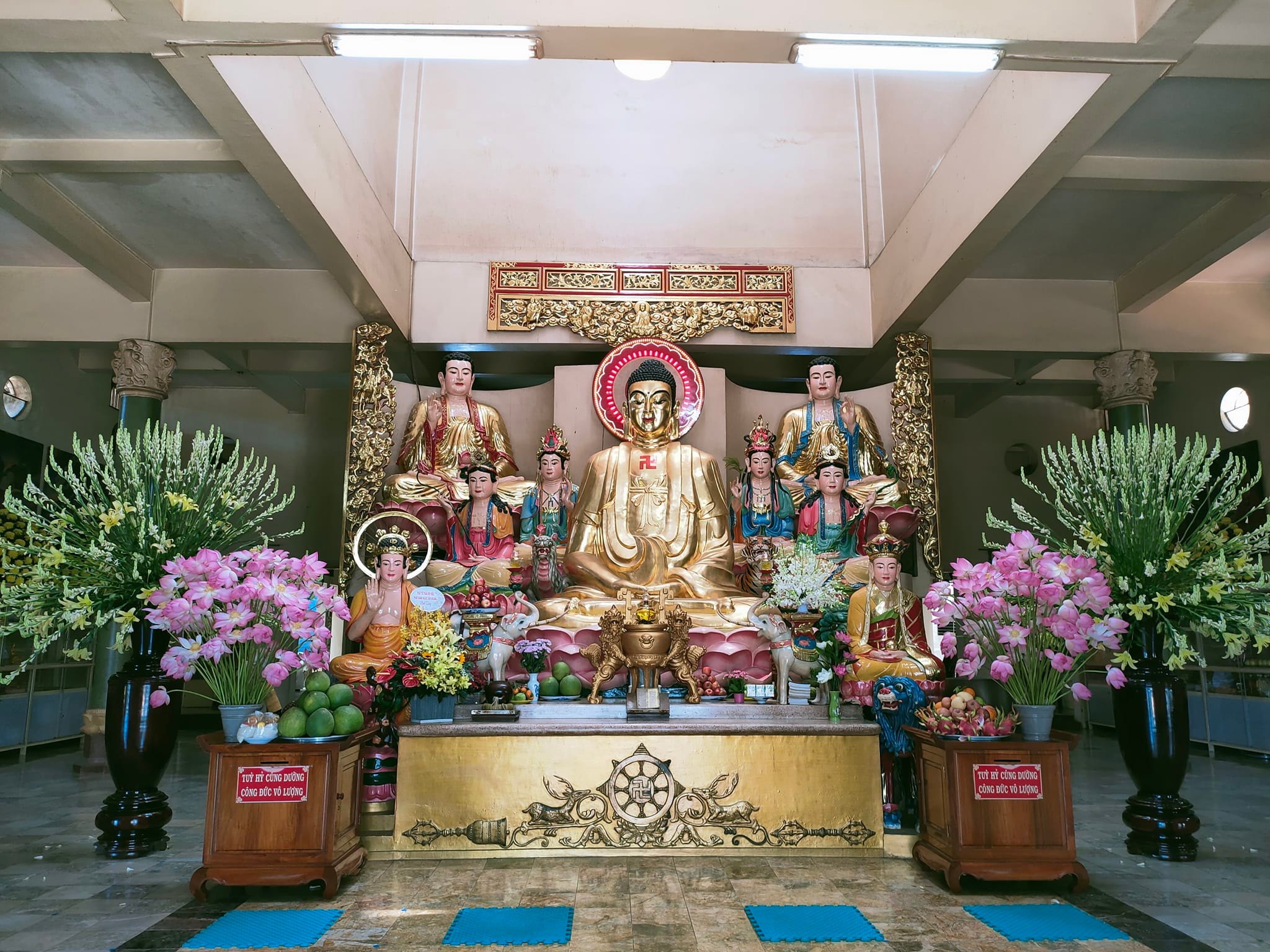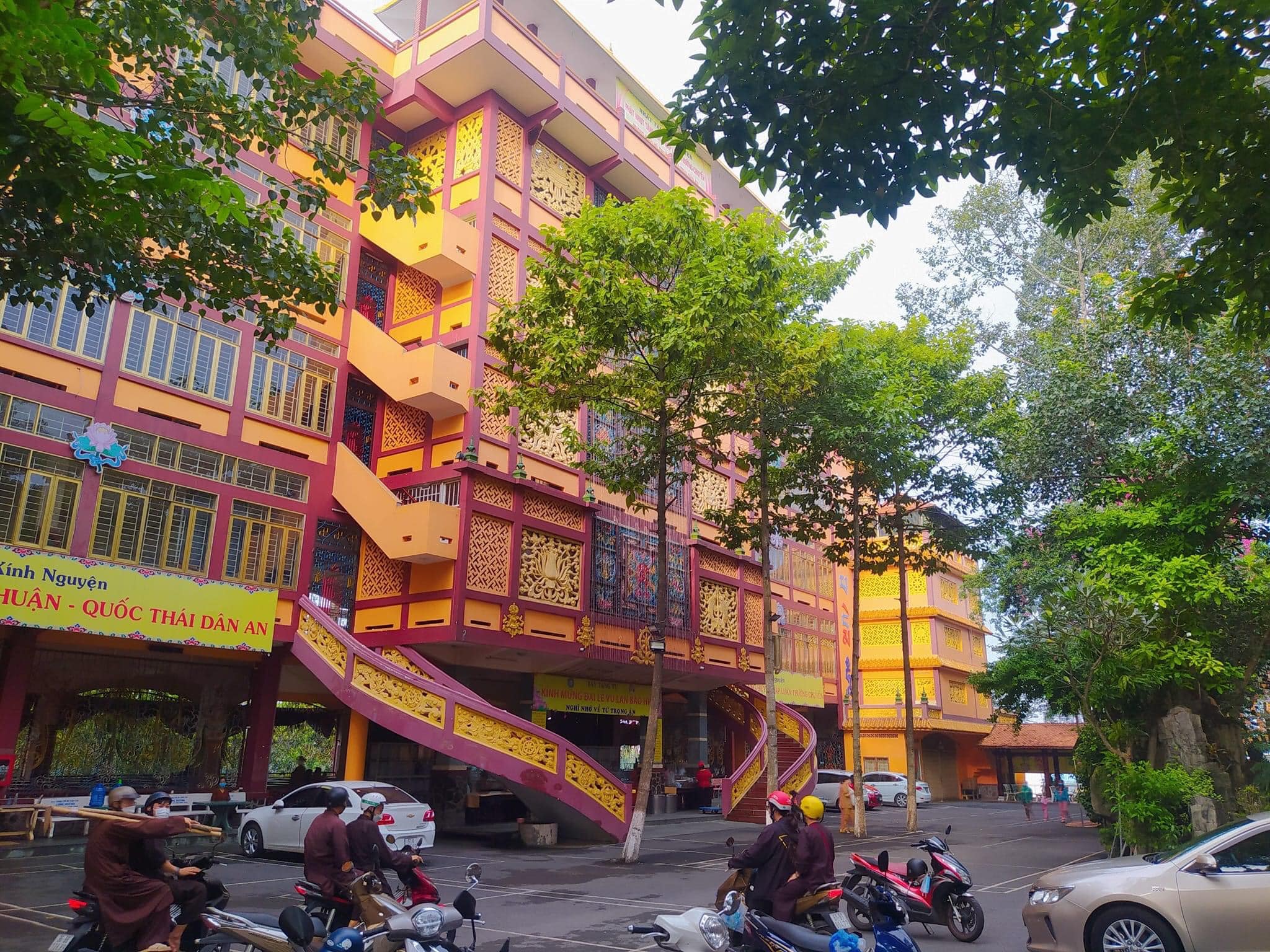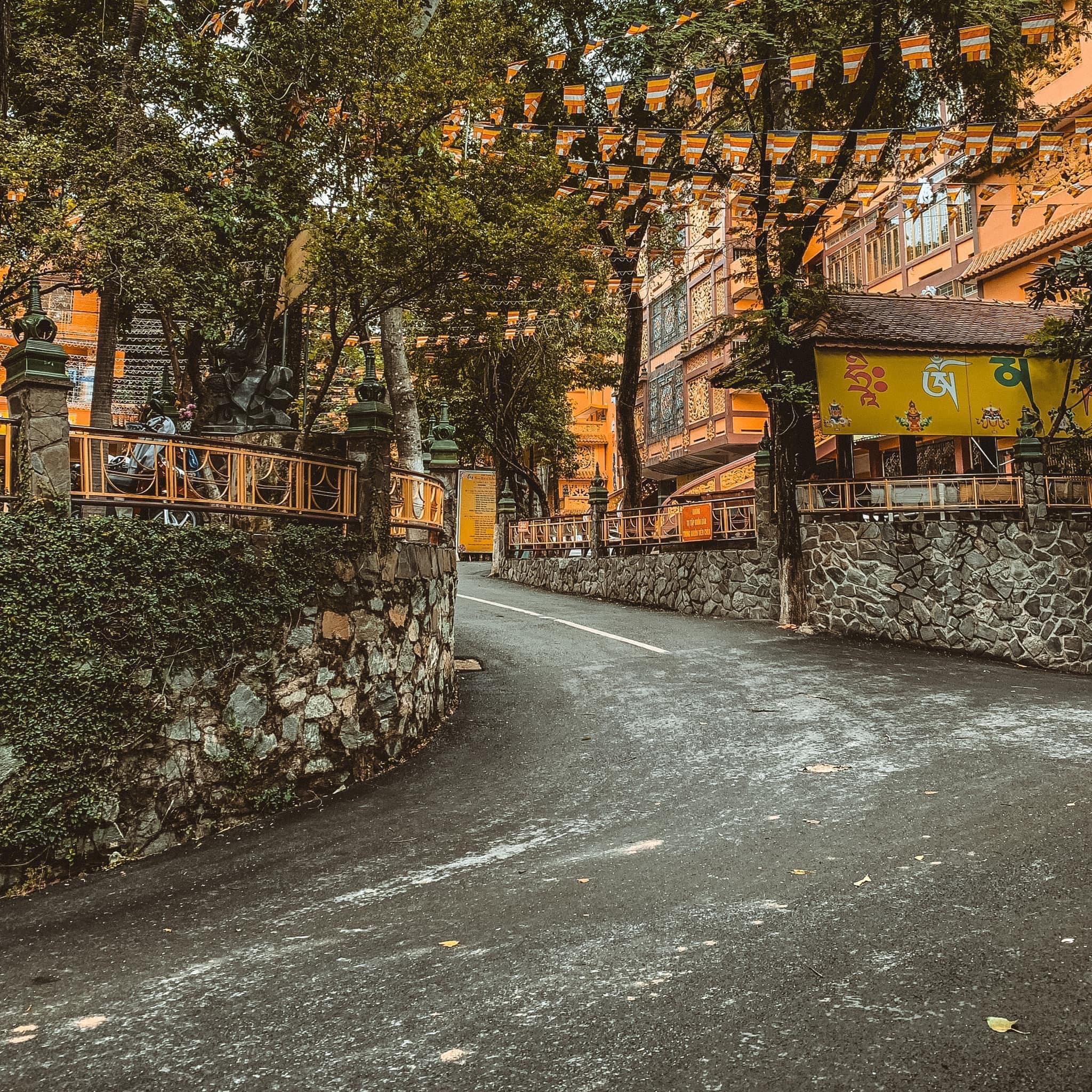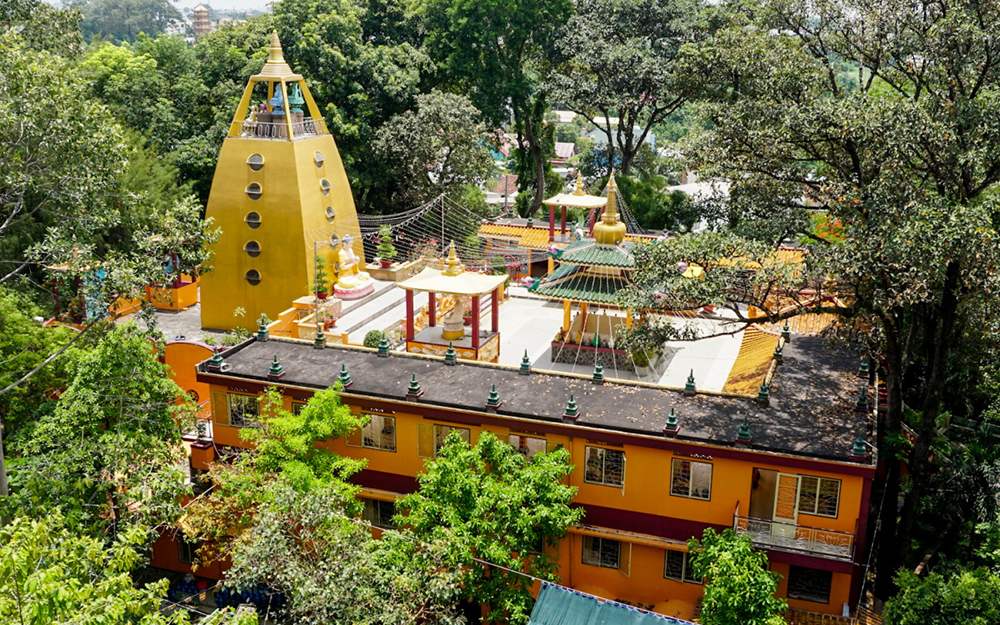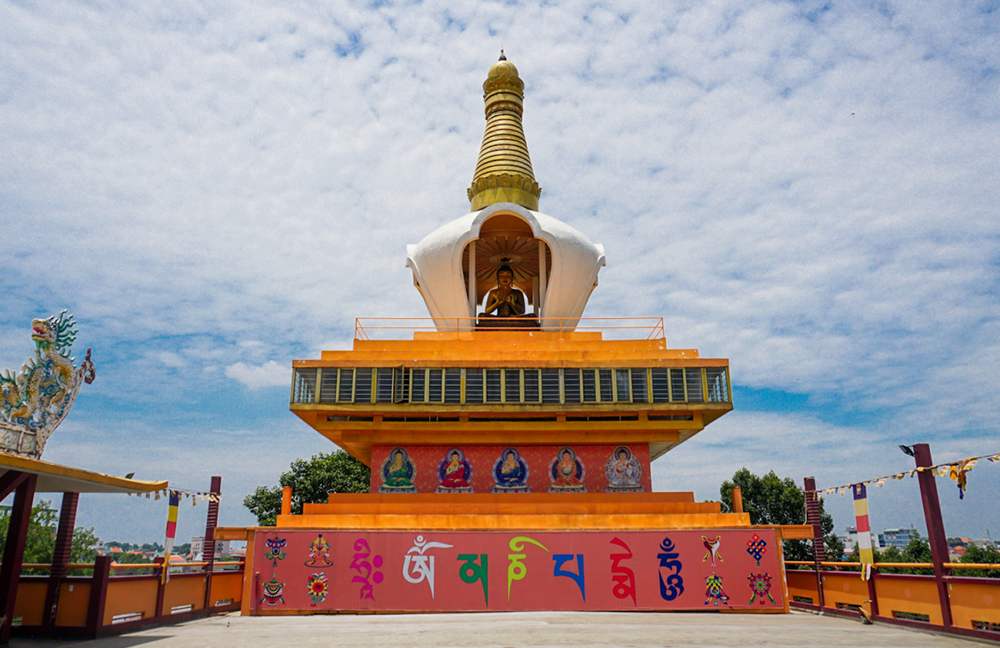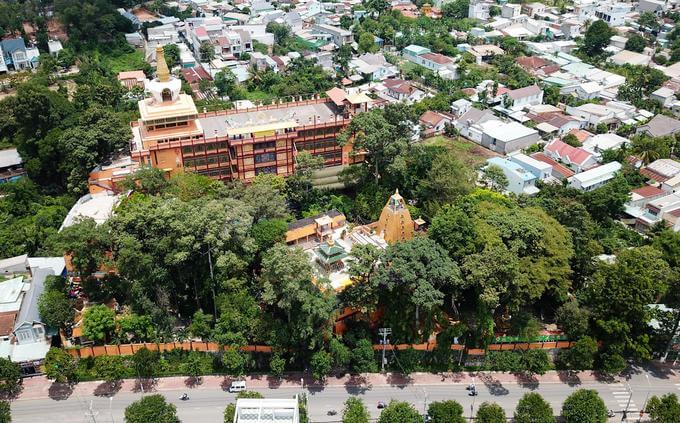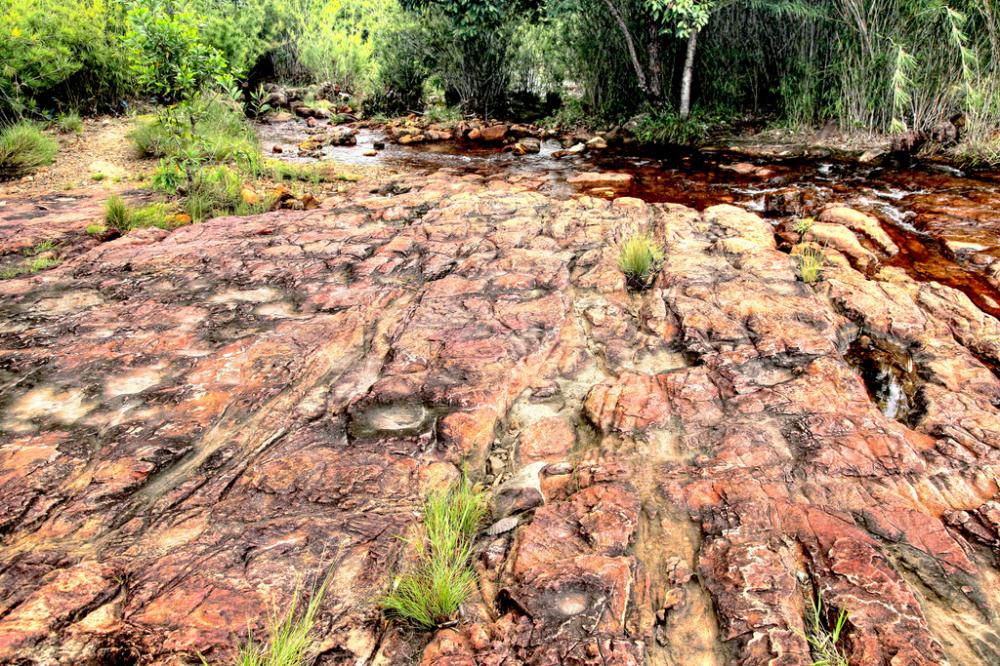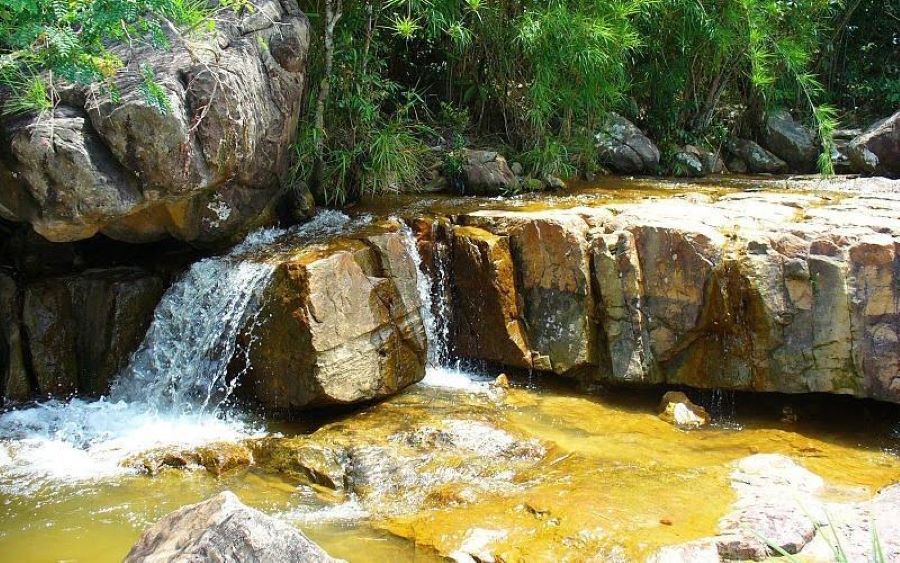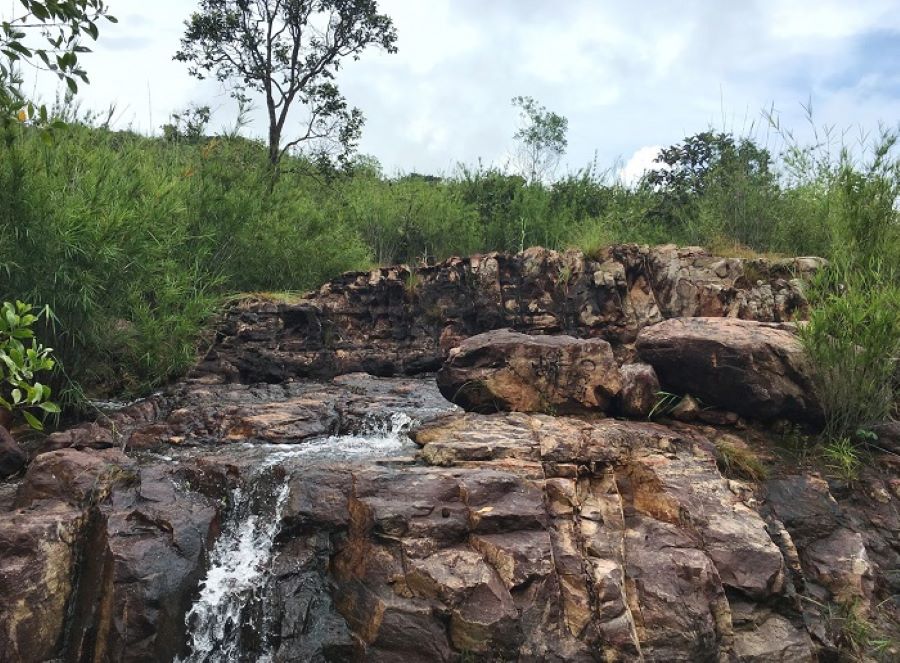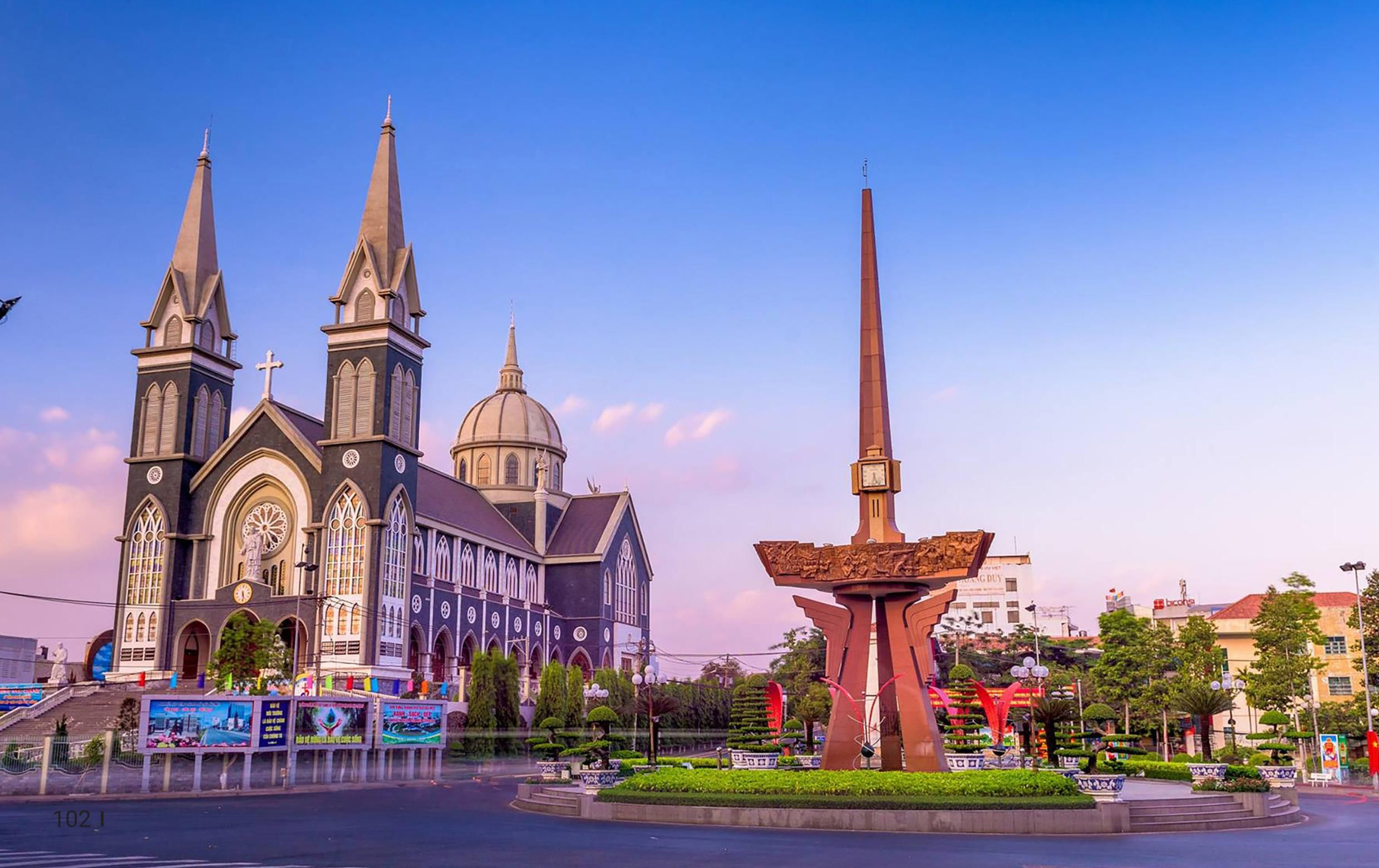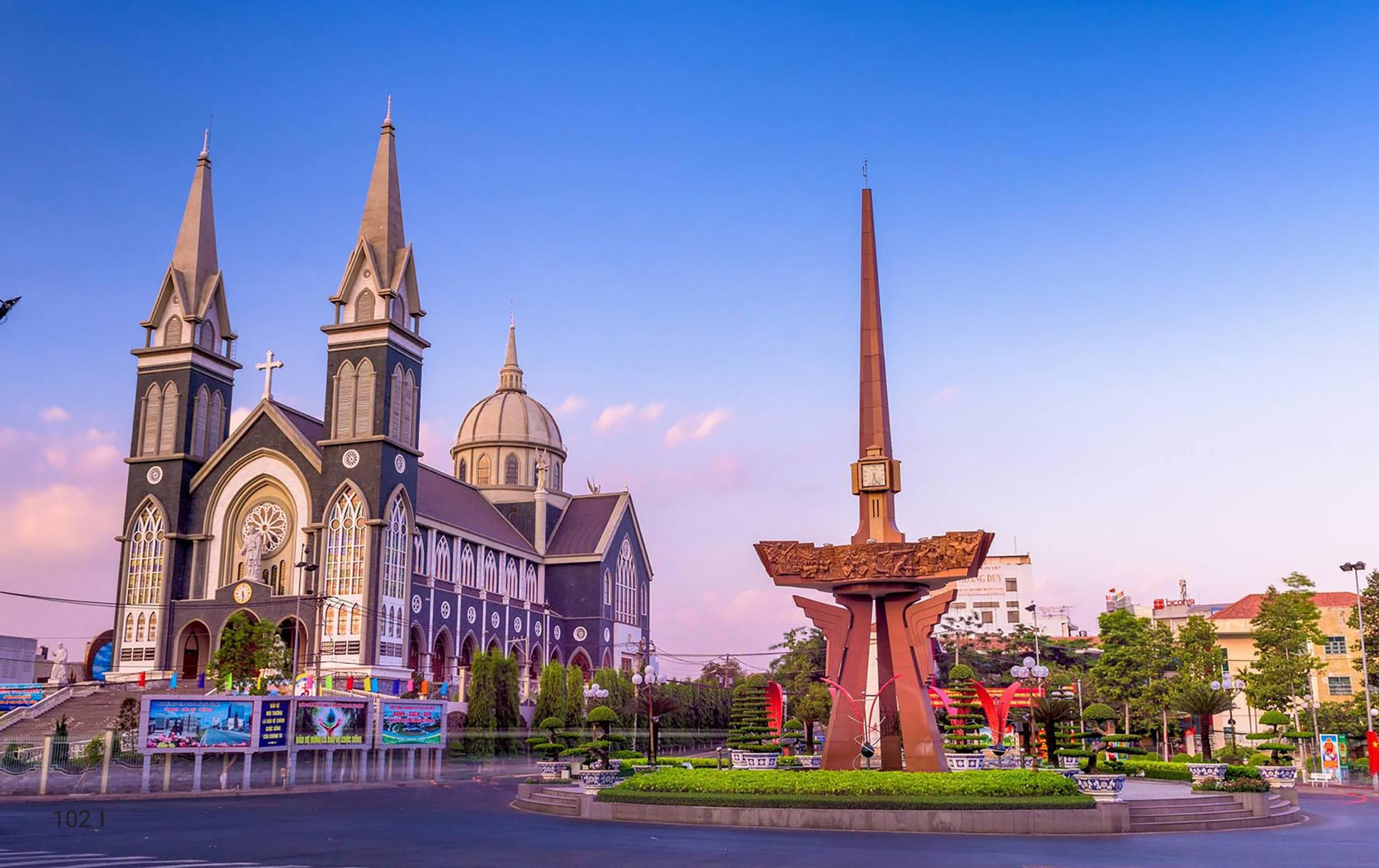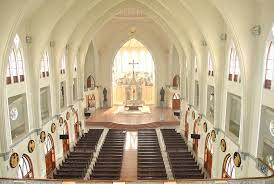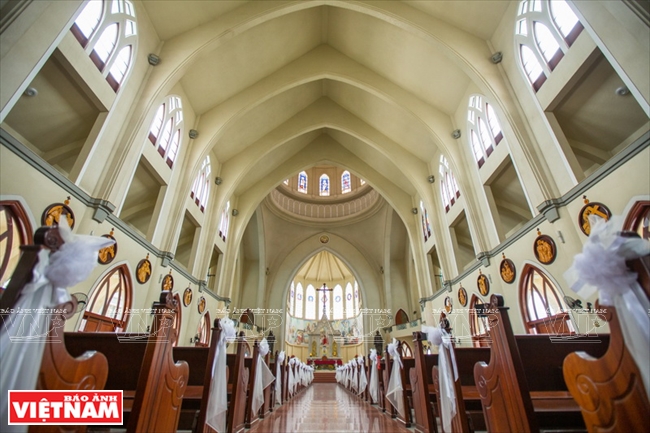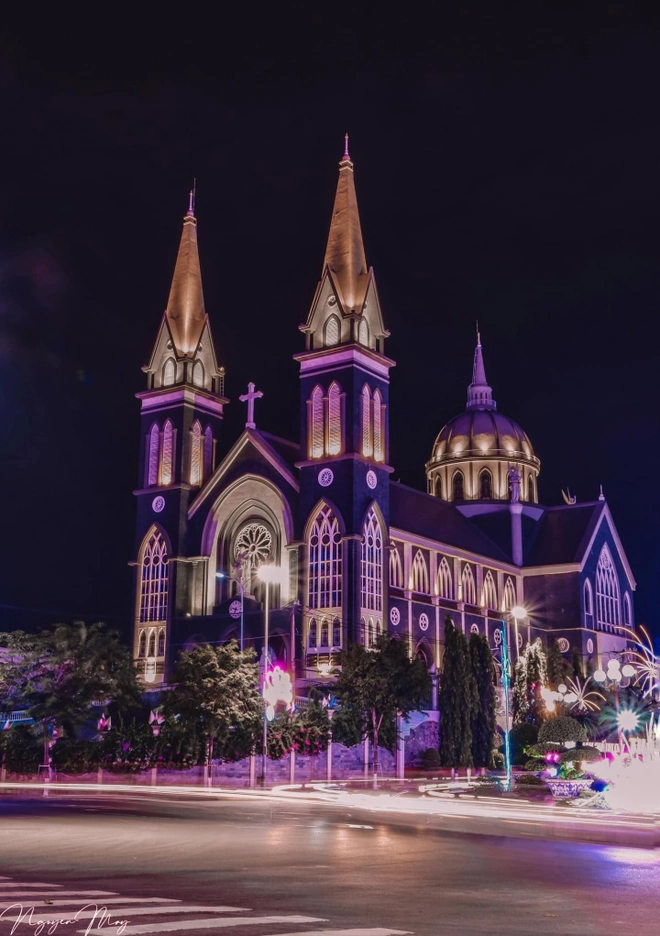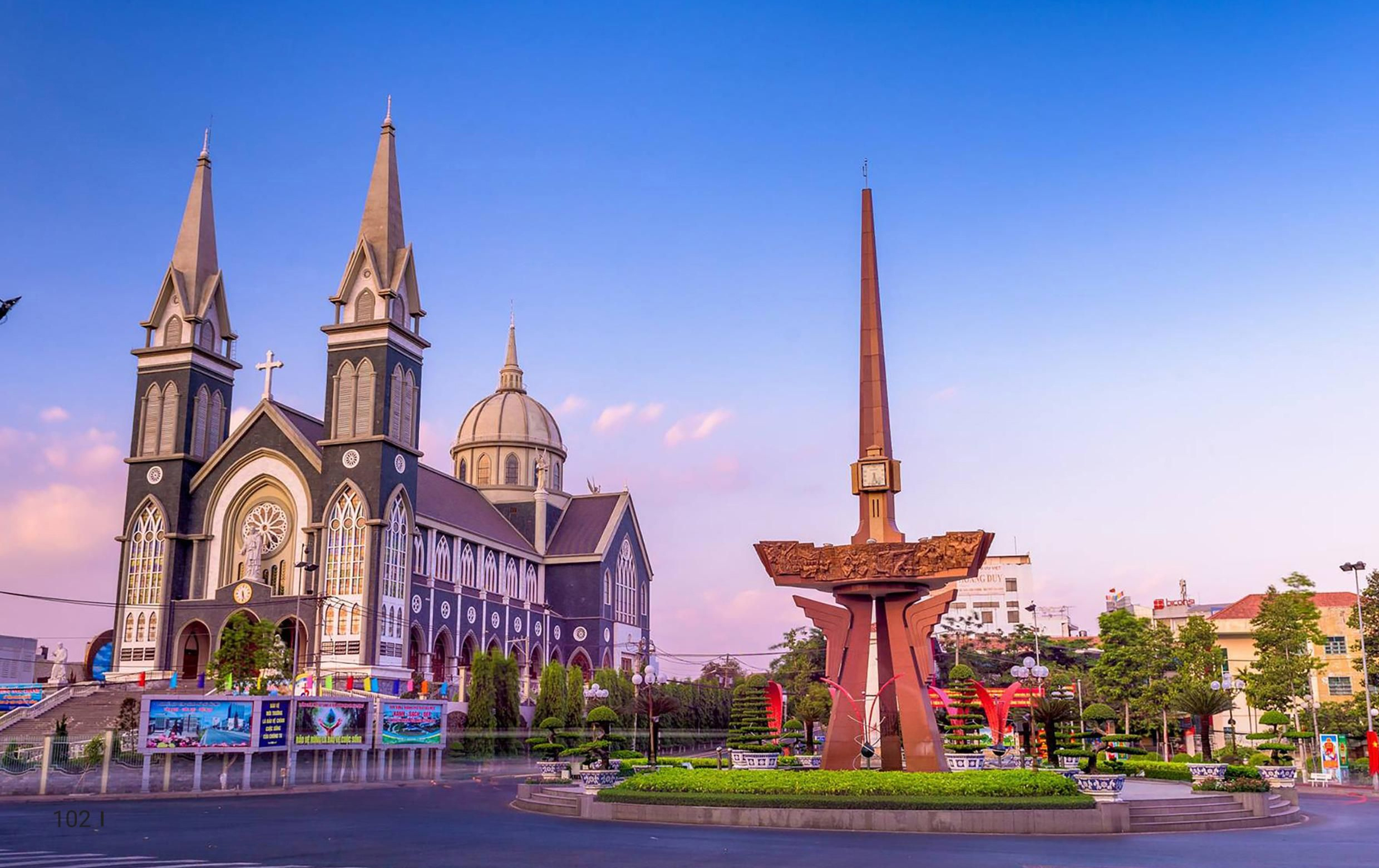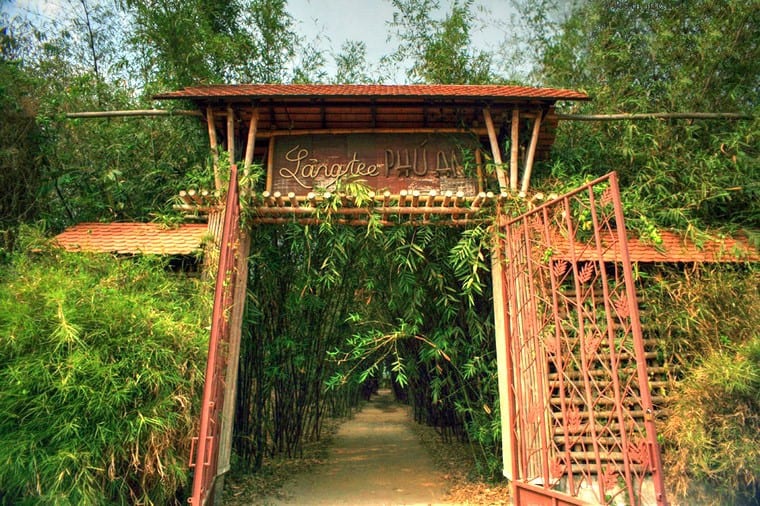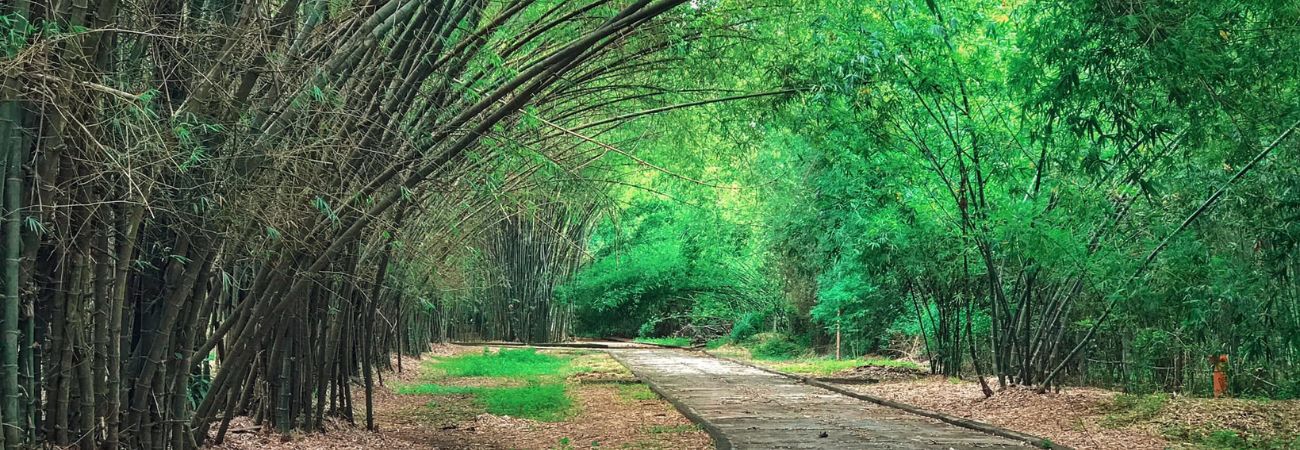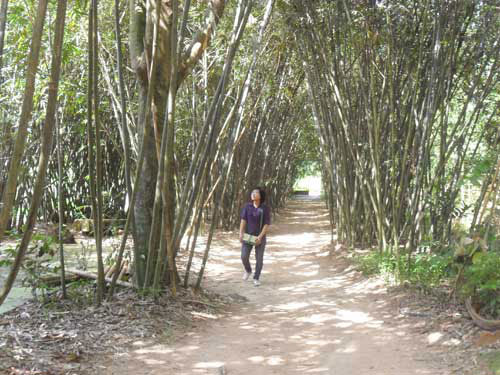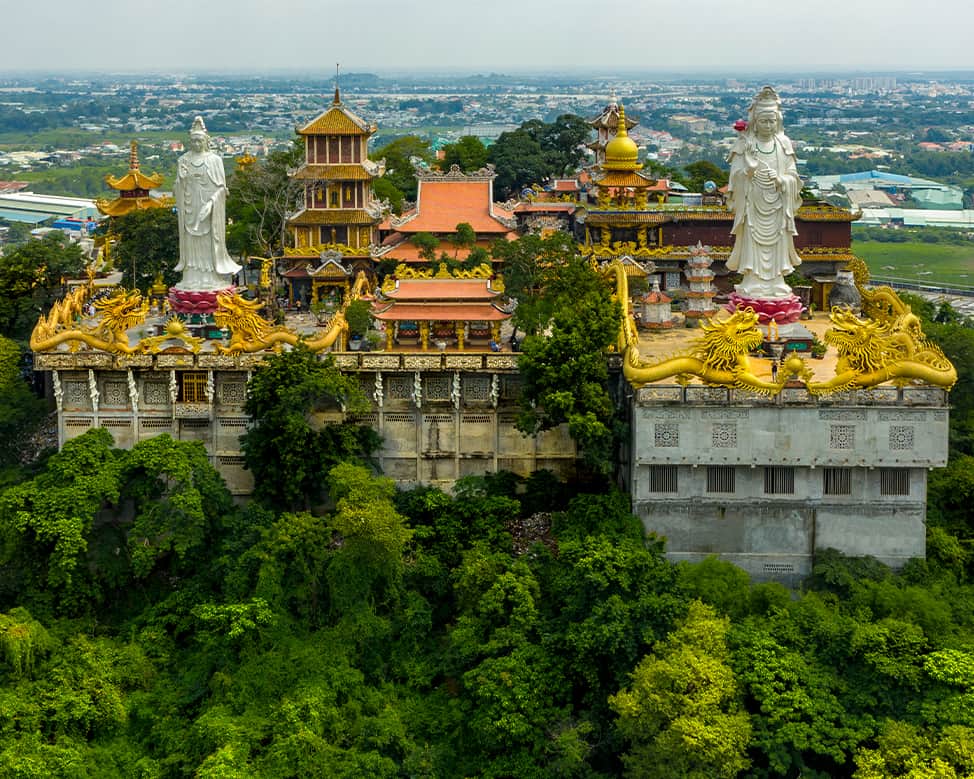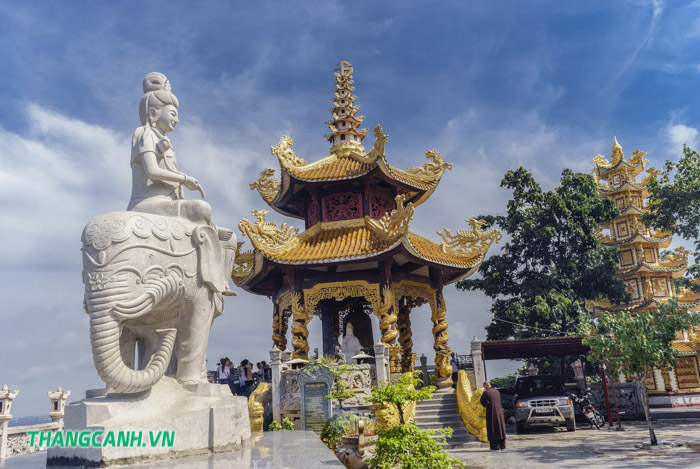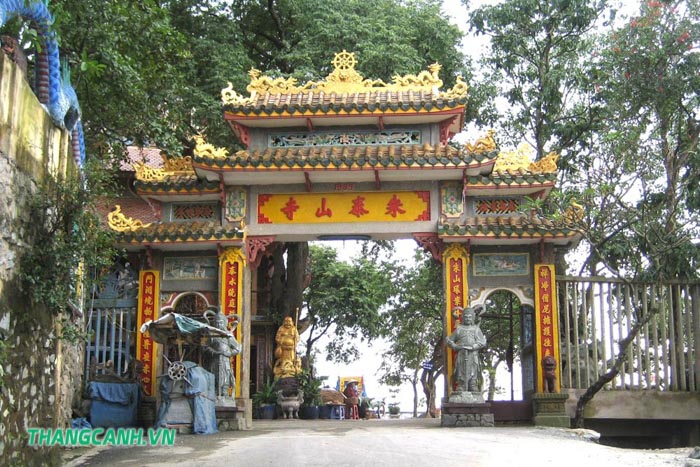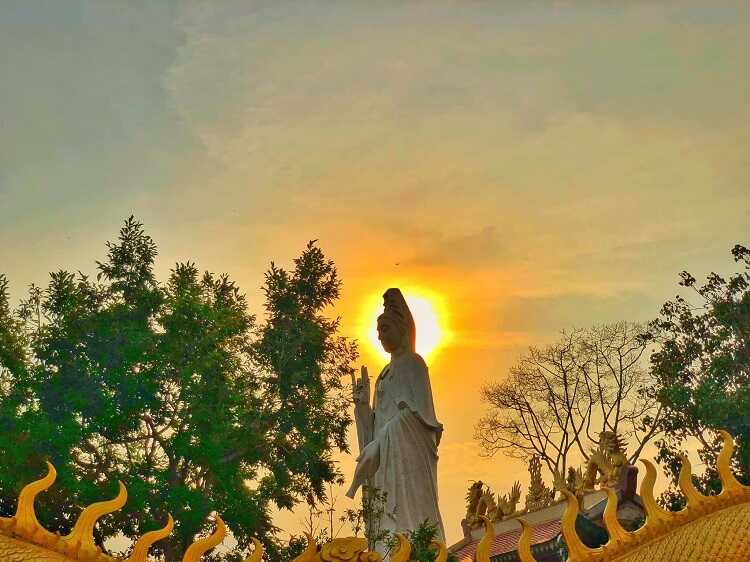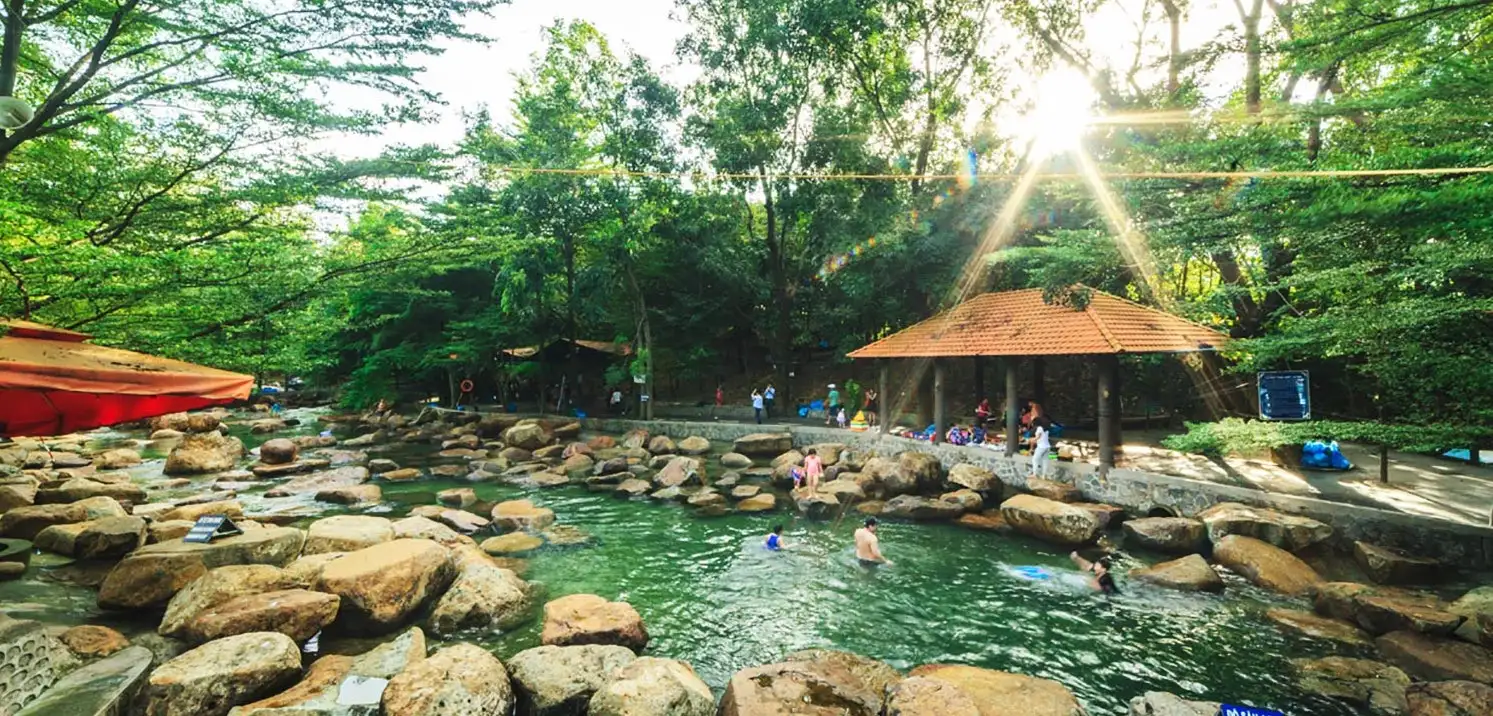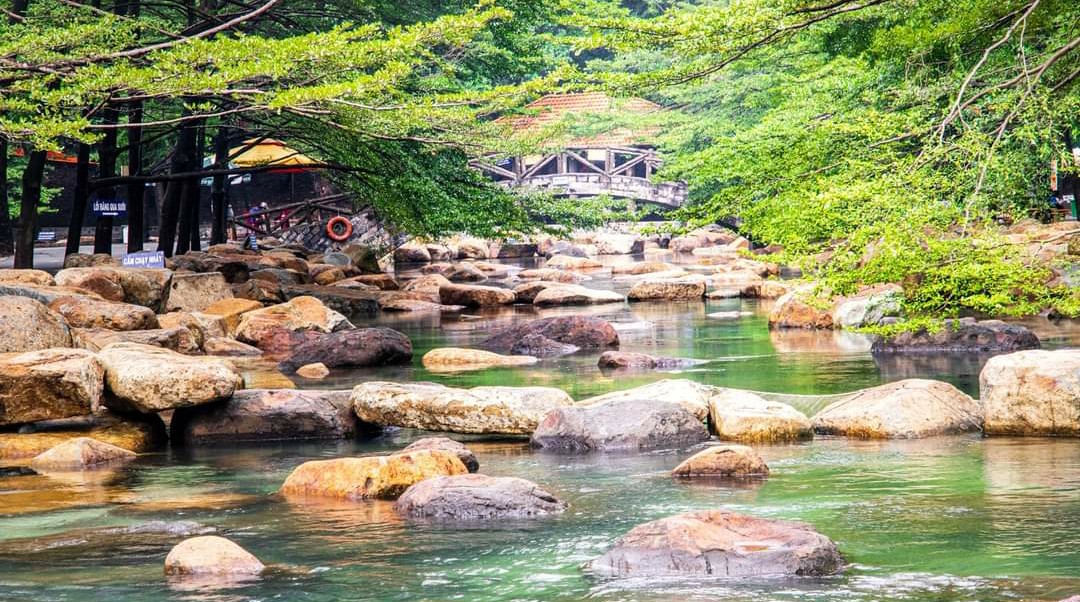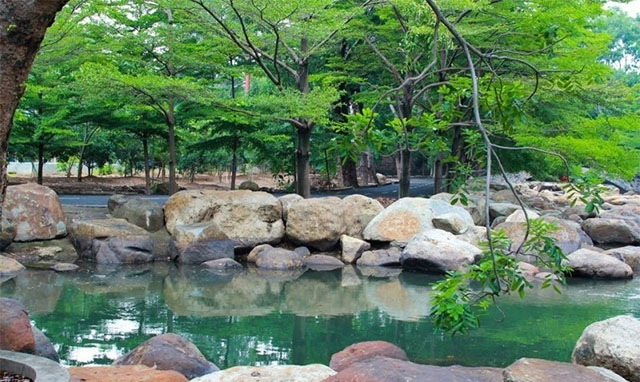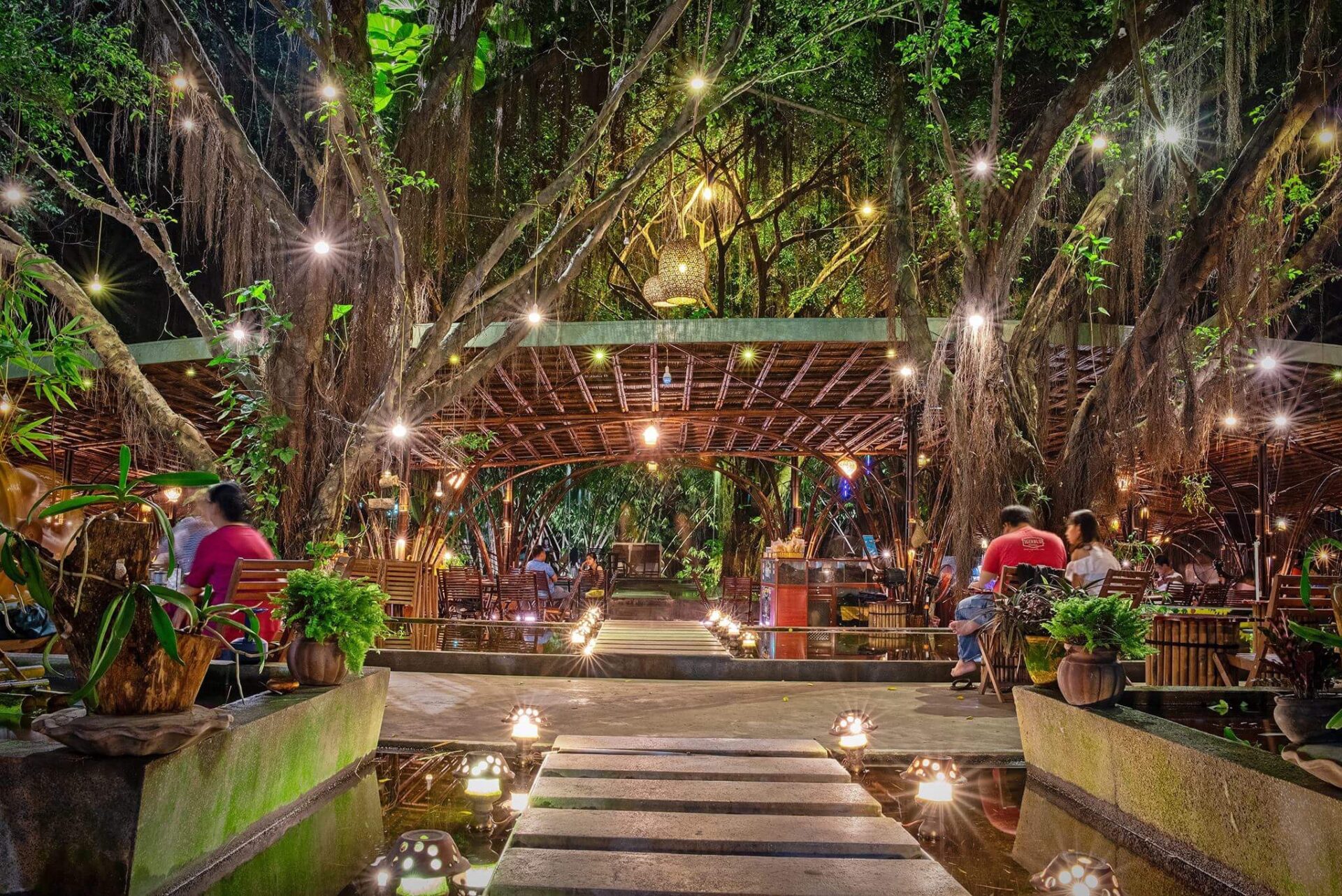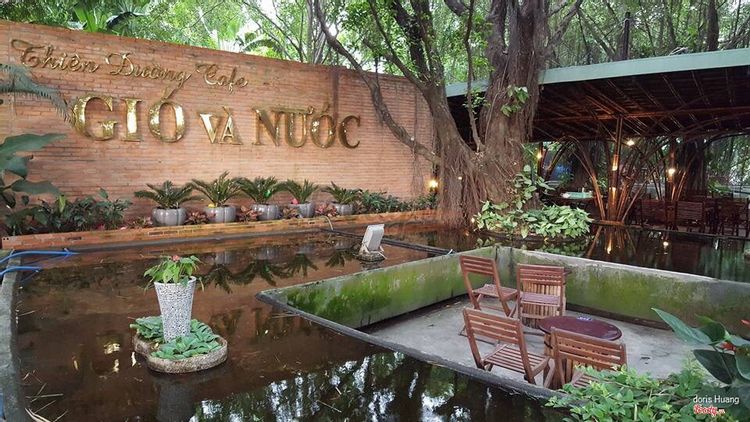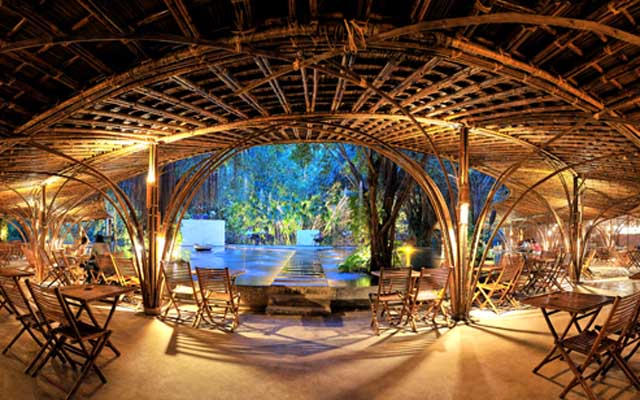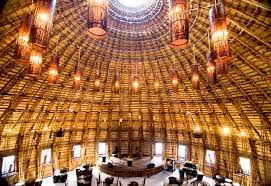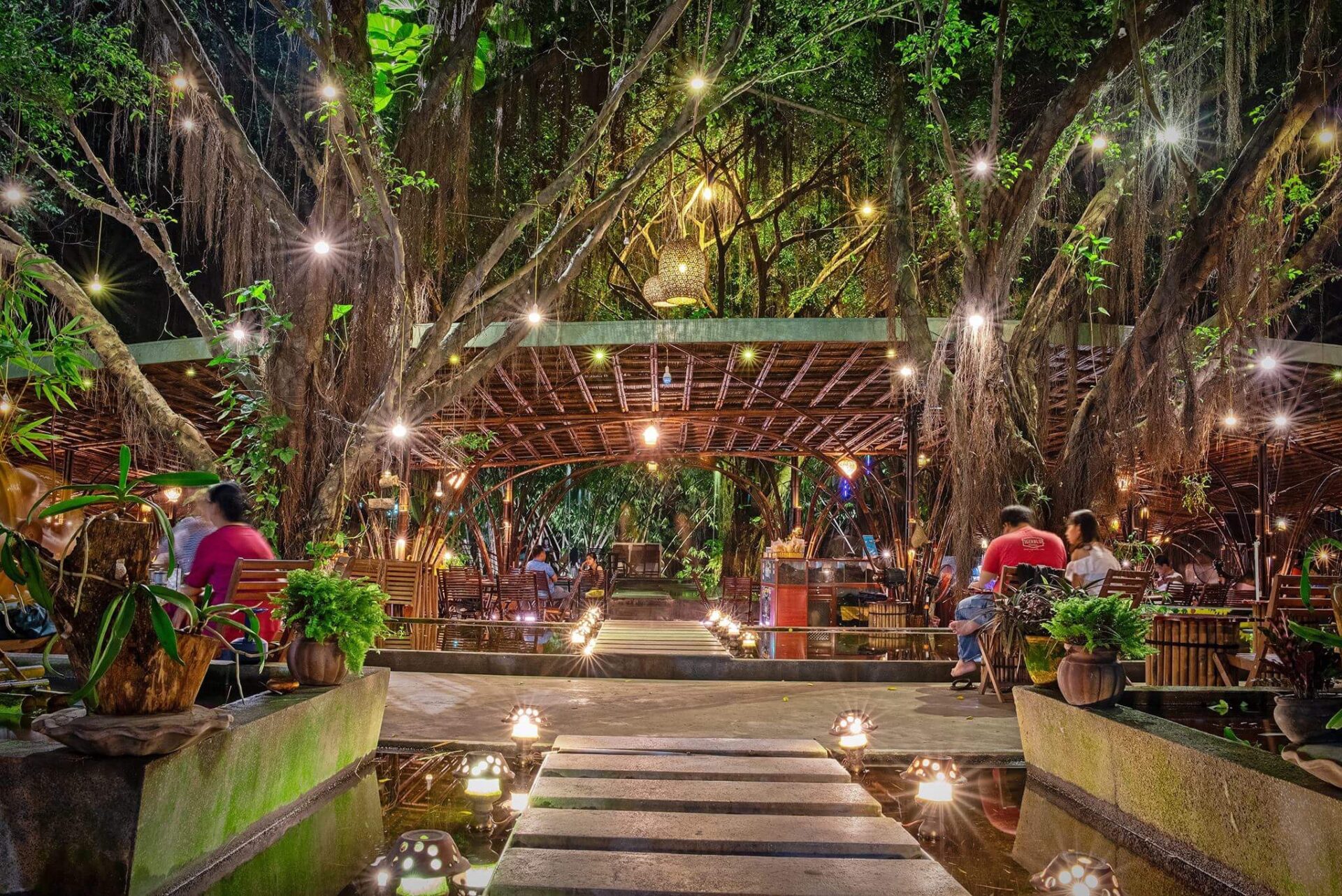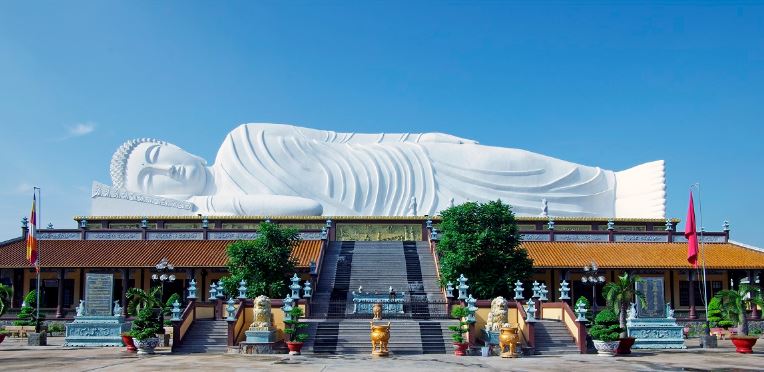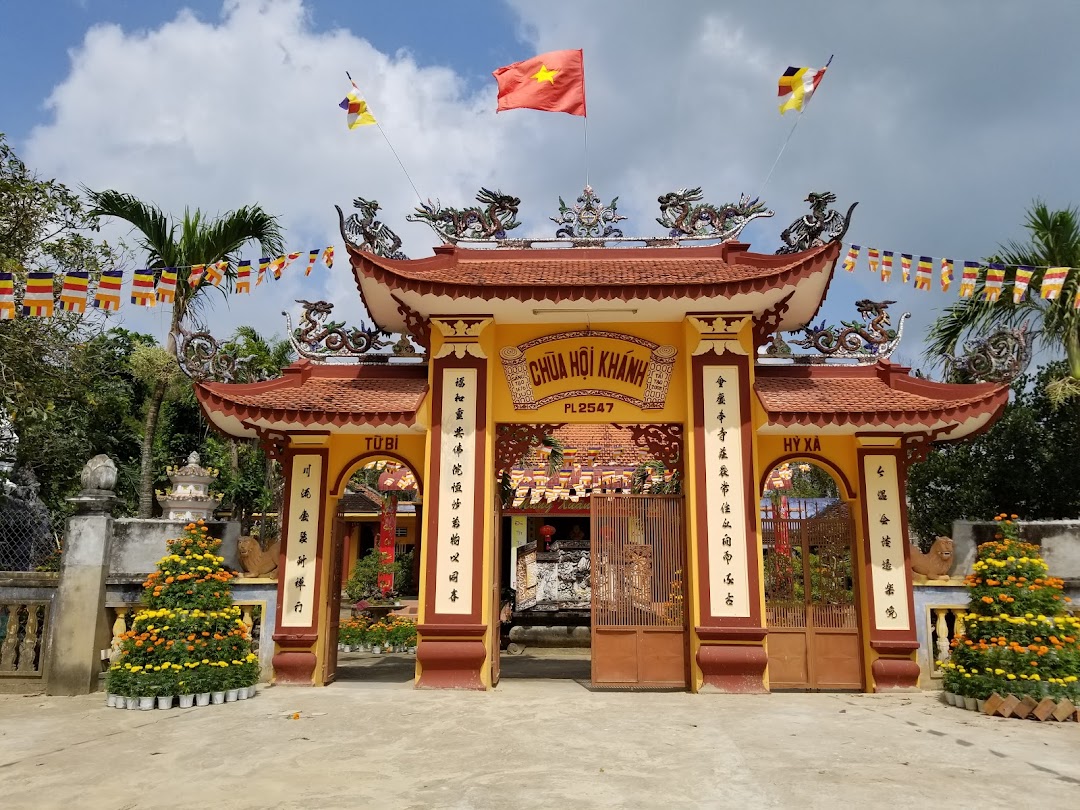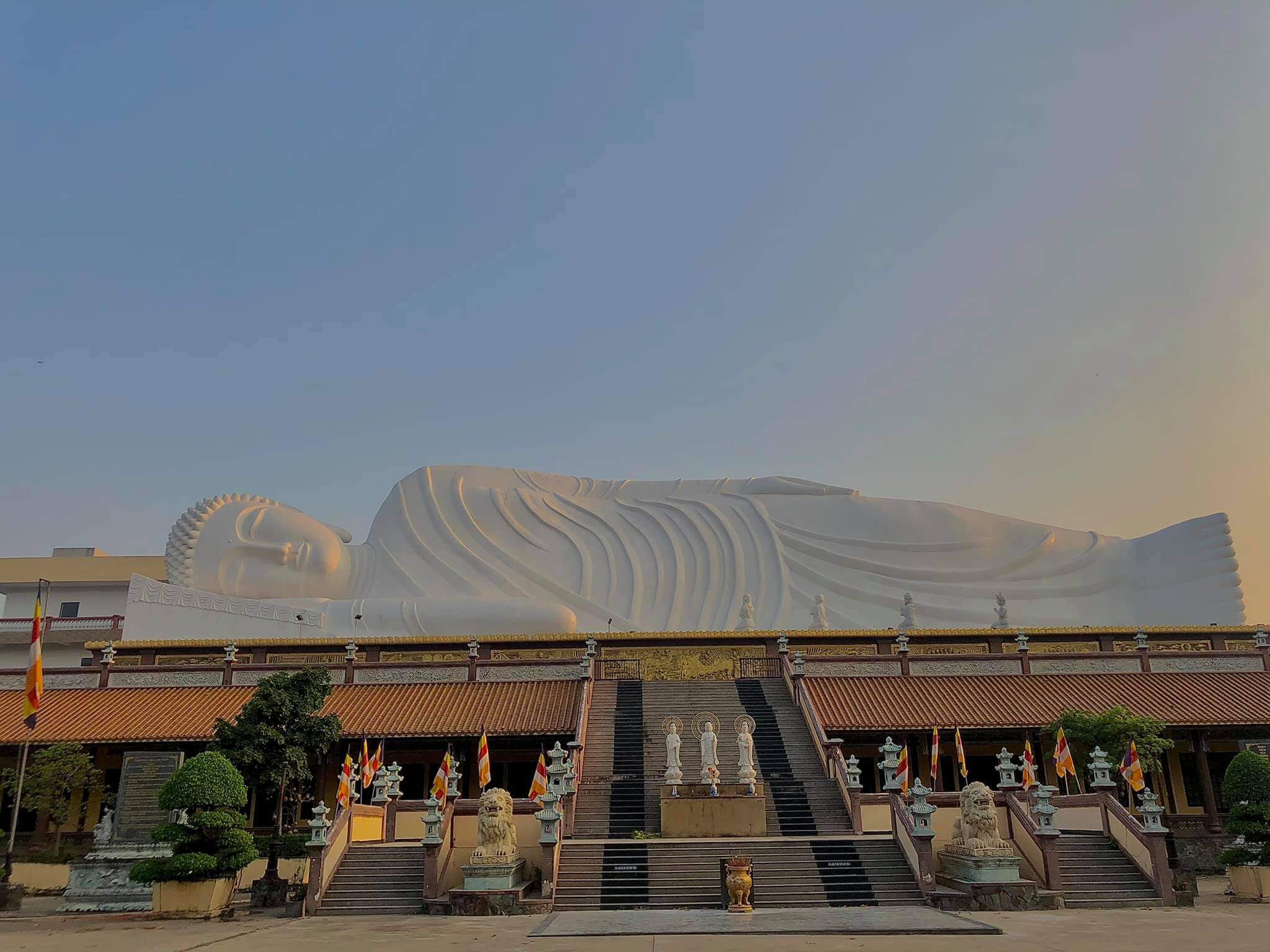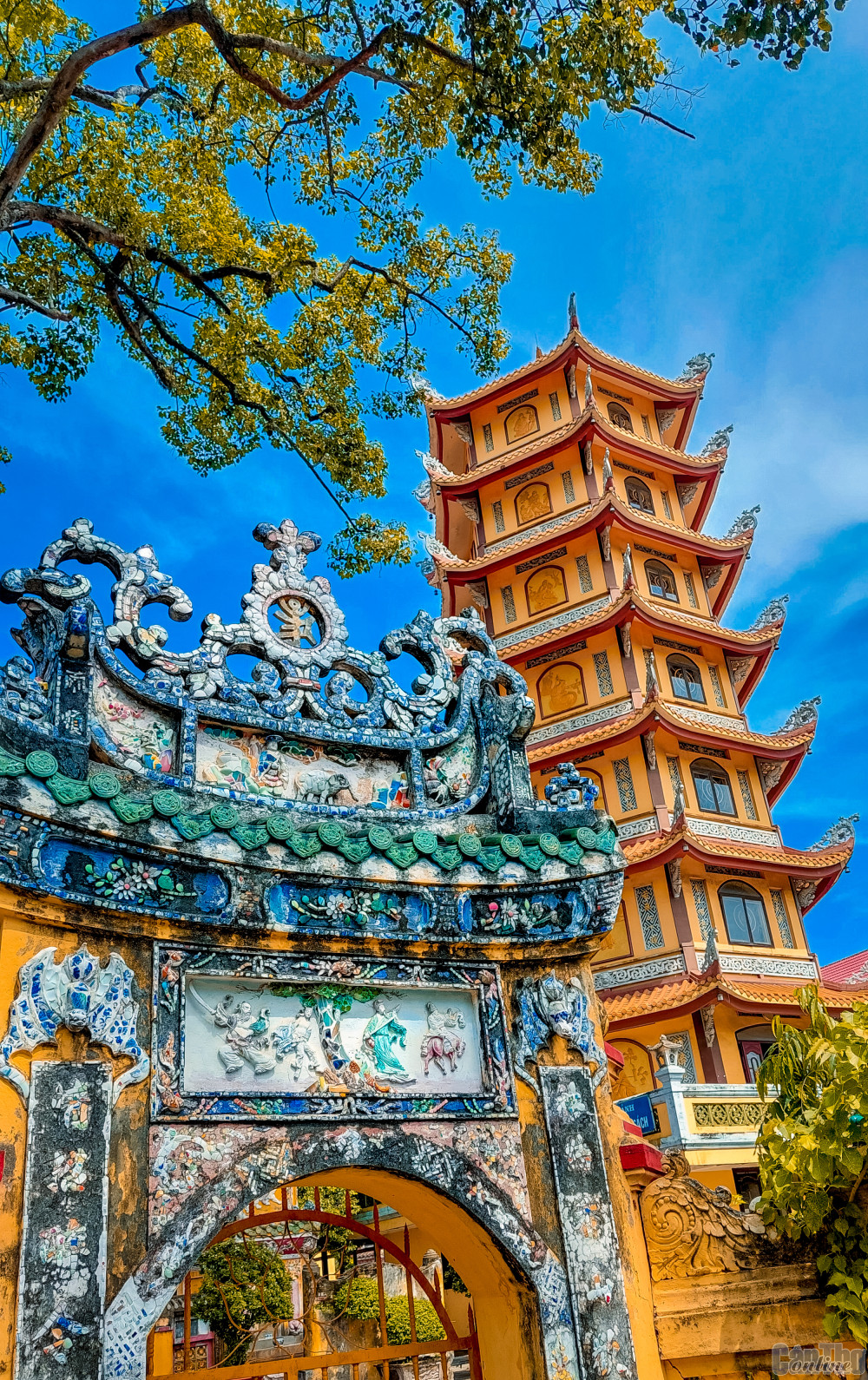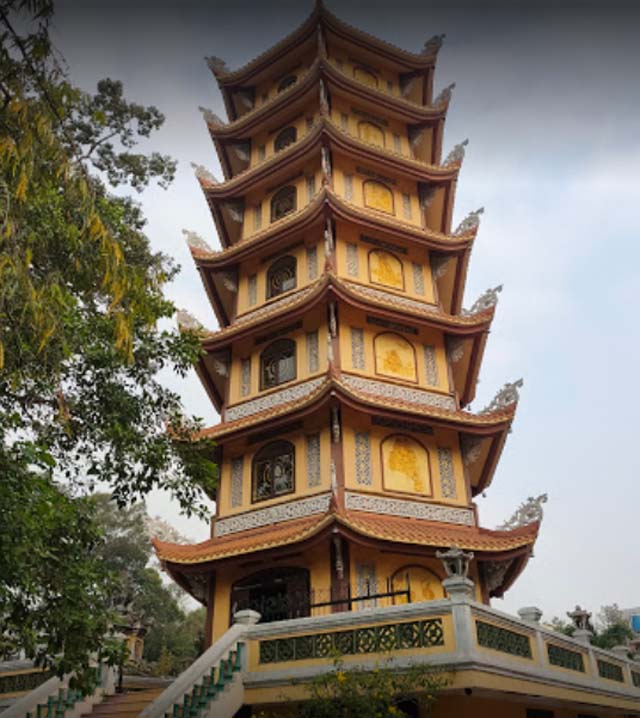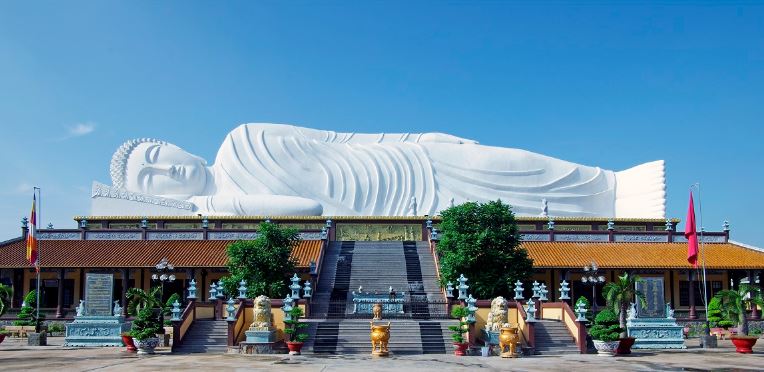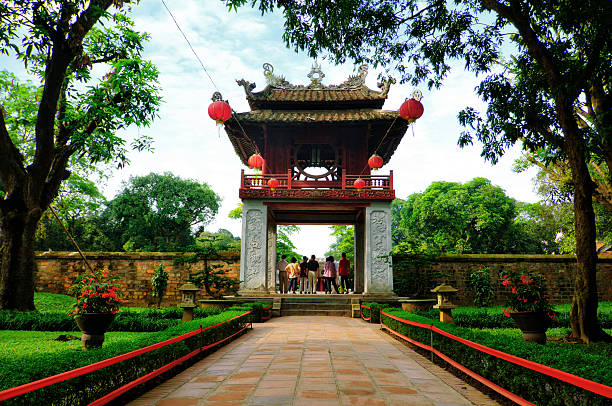Chau Thoi Pagoda is located on top of Chau Thoi mountain, a mountain in Binh An commune, Di An district, Binh Duong province. Chau Thoi Pagoda is 20km west of Thu Dau Mot city, adjacent to Dong Nai river and located close to major roads to major cities such as Ho Chi Minh, Bien Hoa, Ba Ria - Vung Tau... Thanks to its location With a prime geographical location, Chau Thoi pagoda attracts many domestic and foreign tourists every year to visit and worship the pagoda.
Based on research sources, Chau Thoi Pagoda was founded by Zen Master Khanh Long in 1612. At that time, Chau Thoi Pagoda was still a small hut and was called Hoi Son Tu. With more than 300 years of history, Chau Thoi Pagoda has gone through 13 generations of abbots. To have the present spacious appearance, the pagoda has undergone dozens of restorations. In 1930, the Ancestral Church and lecture hall were restored; In 1971, cement was used to build 220 climbing steps. These 220 steps are still used today to serve climbers; In 1993, the main hall was restored. In recent years, other items such as stupas, Buddha statues, dragons... have also been gradually built and completed.
Chau Thoi Pagoda is about 30km northeast of Ho Chi Minh City center. In Ho Chi Minh City, you can choose car, motorbike or bus to get to Chau Thoi Pagoda.
Car, motorbike: with a distance equivalent to 30km, if you travel by these two means, it will take about 60 minutes. First, run along Truong Chinh Street to Hanoi Highway at Tan Thoi Nhat -> go along Hanoi Highway and National Highway 1K about 25km to Chau Thoi, Binh An, Di An -> Continue to Chau Thoi You will arrive at Chau Thoi mountain in Binh Thang commune. At this point, you will have two choices: either climb 220 steps to get to Chau Thoi mountain, or run straight up a bit and there will be a path to Chau Thoi pagoda.
Bus: from the Western bus station, you take bus 601 to go to Bien Hoa city, Dong Nai, the time will be about 60 minutes -> take bus number 5 going towards Bien Hoa Cho To, this bus will go straight to Chau Thoi mountain, travel time is about 10 minutes.
If you choose to go by road, at the 170th step you will see a large rock right in the middle of the path, especially this rock is always used by temple visitors to burn incense. People often call that rock by the familiar name "Mr. Ta", the god who guards the temple door. In the 1900s, during the process of building 220 walking stairs, people worked together to dig out a lot of stones. However, only "Mr. Ta" can't get rid of him no matter what he tries. At that time, the abbot used paint and wrote on it some Chinese characters meaning "Ta Lao Trung Son" or Mr. Ta who guards the mountain. From then on, everyone, whether local people or visitors to the pagoda, wholeheartedly worshiped "Mr. Ta".
At Chau Thoi pagoda, people rumored that couples in love should not go to the pagoda together because this place is an ancient temple that "kills love". However, this is still a baseless rumor because every day many couples come to the temple to pray for love. To this day, they are still happy and visit the temple on special occasions.
Visitors to Chau Thoi Pagoda, at the height of the pagoda, can see the clear, quiet lake surface combined with shady green trees, creating a beautiful scene that is likened to a fairyland. Scenery of Binh Duong. Currently, Chau Thoi Pagoda is a unique, diverse and rich architectural complex including the main hall, the Ngu Hanh Nuong Nuong shrine, Linh Son Thanh Mau, Dieu Tri Kim Mau, Thien Thu Thien Nhan and Ngoc shrine. Emperor God.
The most unique architecture of the pagoda is the roof, where the workers used each piece of porcelain to form 9 dragons. A special feature is that 9 dragons look out in 9 different directions with the purpose of guarding and sealing the pagoda.
Coming to Chau Thoi Pagoda, visitors will have the opportunity to admire large Buddha statues and Avalokiteśvara Bodhisattva statues hand-cast by craftsmen in bronze or marble. In particular, the pagoda also preserves three ancient stone Buddha statues and a Guanyin statue made of jackfruit wood that is up to 100 years old.
Binh Duong
From January to December
1658 view


 vn
vn en
en ja
ja ko
ko zh
zh


















